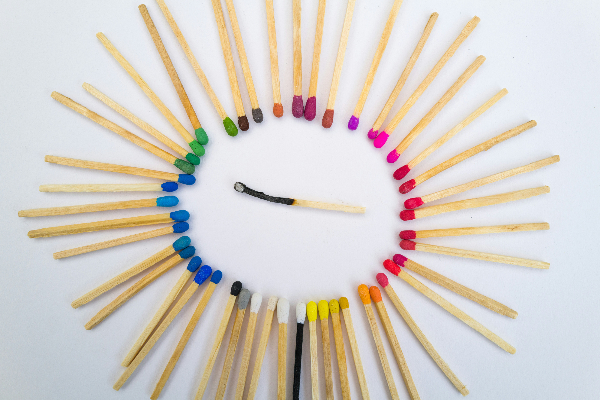Empathy is a Design Mindset – part 2

Empathy is the ability to be understanding of and sensitive to another person’s feelings and thoughts without having had the same experience. In an earlier post, Pelochino described empathy as the foundation of design thinking. Innovators and designers develop a deep emotional understanding of people’s needs, and they use this knowledge to address complex problems. How can empathy be developed in classrooms and schools?
IDEO, a global design firm that uses a human-centered approach to help organizations innovate and grow, recommends making empathy in design a deliberate practice. That is to say, being intentional about creating opportunities to connect with people in meaningful ways, and setting aside reactions and behaviors that might interfere with this process. Using design thinking with students to solve challenges can be a great way to make empathy an intentional practice in classrooms. The strategies used in the design thinking process develop three different kinds of empathy (cognitive, emotional and compassionate) in an intentional way. Let’s take a look!
- Meaningful interviews help designers understand a person’s thoughts, emotions, and motivations. During the interview process innovators develop cognitive empathy, which is knowing how the other person feels and what they might be thinking, also known as perspective-taking. Goleman describes cognitive empathy as mind-to-mind understanding; it tells us how best to communicate with that person, what matters most to them or their worldviews. If you are running a design challenge in your classroom, for example, prepare your students by discussing strategies that will help them conduct a productive interview, and by reviewing the social and emotional skills involved in the process (what does active listening look like? What can you do if you notice getting frustrated or becoming judgmental with your interviewee?).
- Observing and shadowing the people for whom you are designing are good strategies to develop empathy. Pelochino reminded us that “what people say and what they do, don’t always line up”. Finding these discrepancies can give designers great insights into the challenges they are trying to solve. In this case, designers go beyond understanding someone’s point of view; they become well-attuned with the other person’s emotional world… they feel with them. This is what we call emotional empathy, which takes place when you feel physically along with the other person. When you develop this kind of empathy, you will most likely be aware of your body’s emotional signals (self-awareness), which mirror the other person’s feelings. For example, you might feel the urge to cry when someone else is crying. Emotional empathy can be fueled through becoming someone else for a day. What would happen if you became a student for a day? Join the Shadow a Student Challenge from School Retool, if you want to find out!
- Another effective way to develop empathy is immersing yourself in people’s experiences. It means doing what they do, and most importantly, feeling what they feel. Are they stressed, scared or overwhelmed? As we have discussed in earlier posts, there is great wisdom in our emotions and it is worth spending some time exploring their meaning. In many cases, when designers immerse themselves in people’s experiences, they are moved to take action and help. This is what we call compassionate empathy: we understand this person’s perspective, feel with them and are inclined to do something about their needs. Goleman describes compassionate empathy as heart-to-heart connection; we feel with others and want to do something to improve their experiences. If you are designing for your students, ask yourself “what would I do differently to improve their experience?” and “what emotions would I want them to feel instead of…?”.
Empathy fuels motivation and creative problem-solving; it helps people to think beyond themselves and deepen their understanding of the human experience. Engaging in design thinking can help your classroom and school develop cognitive, emotional and compassionate empathy in an intentional way. Give it a try and let us know how it goes!
2 Comments
Leave a Comment
Subscribe to the HEART in Mind Newsletter
Research-Based Strategies for your SEL Toolbox










I love these very specific examples of ways to build a foundation of empathy practice in the classroom. I also appreciate the various kinds of empathy defined here – cognitive, emotional and compassionate. It’s important to work on developing all three. Very insightful post!
Thank you for your comment, Jennifer! You are absolutely right, it is important to develop these three kinds of empathy in ourselves and our students. Design thinking offers a great way to make empathy actionable!